
People with chronic pain often shun physical activity. However, those who do miss out on one of the best ways to improve their symptoms — using exercise for body pain relief.
Exercise leads to pain relief in various ways. While some of the perks directly affect physiology, others use the mind-body connection to do the trick. Recent research indicates your mental state influences physical health through a complex mechanism — it’s impossible to divorce your brain from the rest of you.
What are the best exercises for reducing chronic pain? Here are three important ways physical activity can help those with lifelong conditions and how to use fitness for body pain relief.
3 Ways Exercise Helps Chronic Pain
Here’s a look at the three mechanisms through which exercise helps chronic pain.
1. It Enhances Functionality and Energy Levels
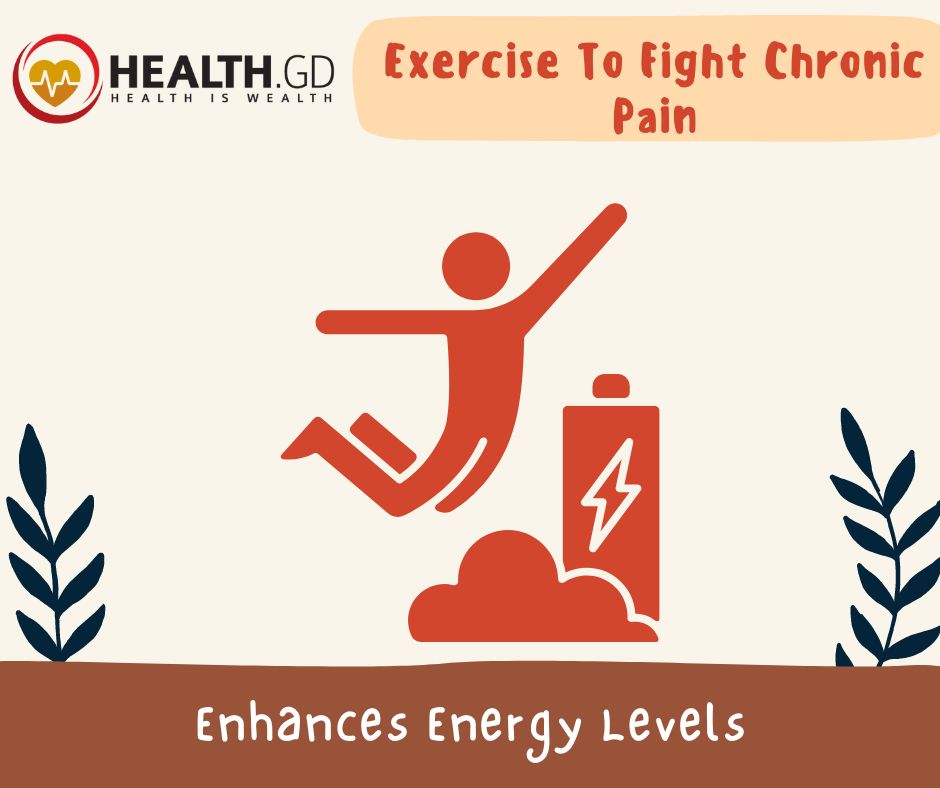
Opioid-based medications were the traditional treatments for chronic pain until recently. Although they restored quality of life for some, they weren’t free from problems. Unfortunately, such protocols can make matters worse as patients become tolerant to their prescriptions, requiring more and more to experience the same effects. Overdoses can be fatal.
Physical movement prompts your body to release endorphins, similar to natural opioids. The difference is there’s no risk of addiction — your body will eventually tire and force you to take a rest. These chemicals ease mild pain and produce a feeling of euphoria — for years, researchers believe they lurked behind the elusive “runner’s high.”
New studies suggest the pain-relieving aspects of exercise also occur because of your body’s endocannabinoid system. You’ve undoubtedly heard of using cannabis to treat chronic pain and your body has a biological equivalent. Exercise increases the level of endocannabinoids in your system, easing your symptoms.
Finally, exercise boosts synovial fluid levels, helping ease joint pain in people with arthritis. This stuff lubricates your joints, keeping everything running smoothly instead of creaky. Both endocannabinoids and endorphins give you an energy boost and the increase in “motor oil” helps you function at your peak.
2. It Reduces Comorbid Mental Health Symptoms
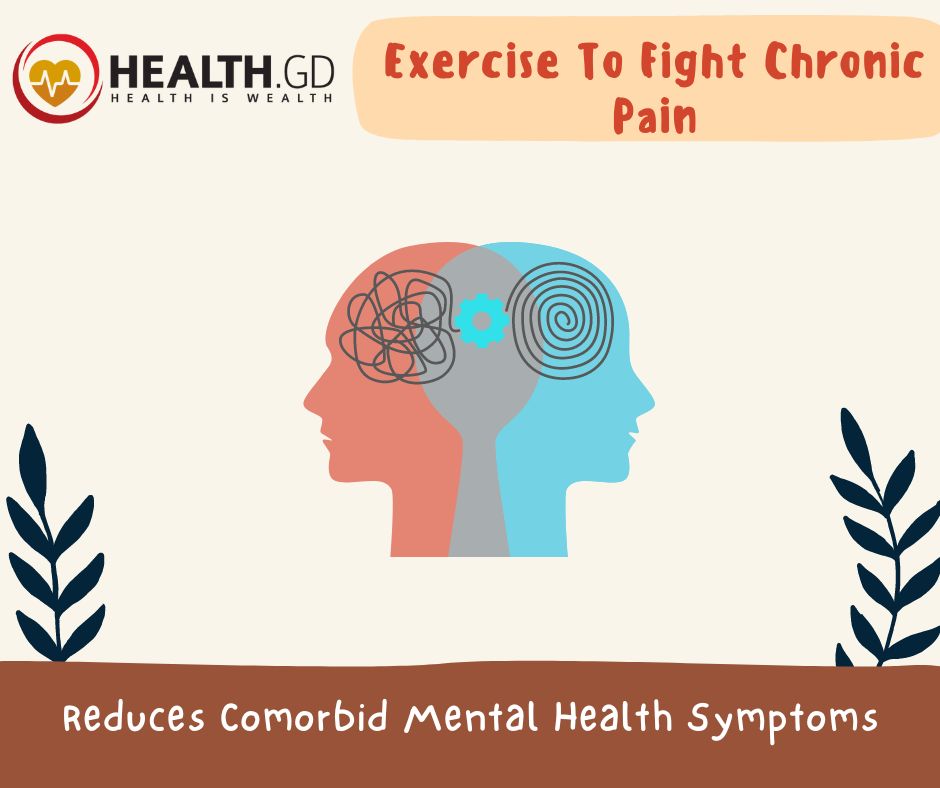
It isn’t unusual for chronic pain patients to have a comorbid mental health condition like anxiety, depression or both. Multiple factors influence this development, from body signals producing panic about what’s happening to the financial burden of obtaining health care in the United States. When patients become overwhelmed, they often slip into despair.
Those juicy endorphins that exercise produces help alleviate depression. Furthermore, movement mitigates anxiety like nature intended — by letting your innate fight-or-flight response do what it evolved to do. Your body doesn’t know if you’re jogging on a treadmill or fleeing a hungry lion, but your cortisol levels drop in response all the same. This stress hormone impacts your neurotransmitters, explaining why you feel so good after a refreshing workout.
3. It Helps Control Your Weight

Patients with chronic pain often lament their doctors’ insistence that they drop a few pounds. However, excess weight puts undue stress on your joints and internal organs, worsening symptoms and making you more prone to disease complications. Even ten pounds of excess weight adds 30 to 40 pounds of pressure to your knees.
Fortunately, you don’t have to get movie-star slim to reap the benefits. Even a modest reduction of ten pounds can improve cholesterol, blood pressure and glucose levels. It also removes considerable joint pressure.
How to Use Exercise for Body Pain Relief
If you experience chronic pain, how can you best use exercise for body pain relief? Here are two essential tips to keep in mind.
Time It Right
Sleep is vital to pain relief, but working out too close to bedtime can keep you awake into the wee hours because of the increased heart rate and core temperature. You should finish your last workout of the day at least 90 minutes before you lie down for the evening, but listen to your body. Sensitive individuals might need a more extensive wind-down period, making morning workouts preferable.
Take Mini Breaks Throughout the Day
A once-and-done training might not be your best bet for managing chronic pain. Working out for more than an hour can raise cortisol levels instead of decreasing them and helps to keep your joints lubricated. Your best bet is to take mini exercise sessions throughout the day instead of squeezing in one long session. Get in 20 minutes before work, use your 10-minute work breaks for walking and complete another mini-session after the final bell rings.
6 Best Exercises for Reducing Chronic Pain
What are the best exercises for reducing chronic pain? The following six suggestions are gentle on your body while helping you get the movement you need for symptom relief.
1. Swimming
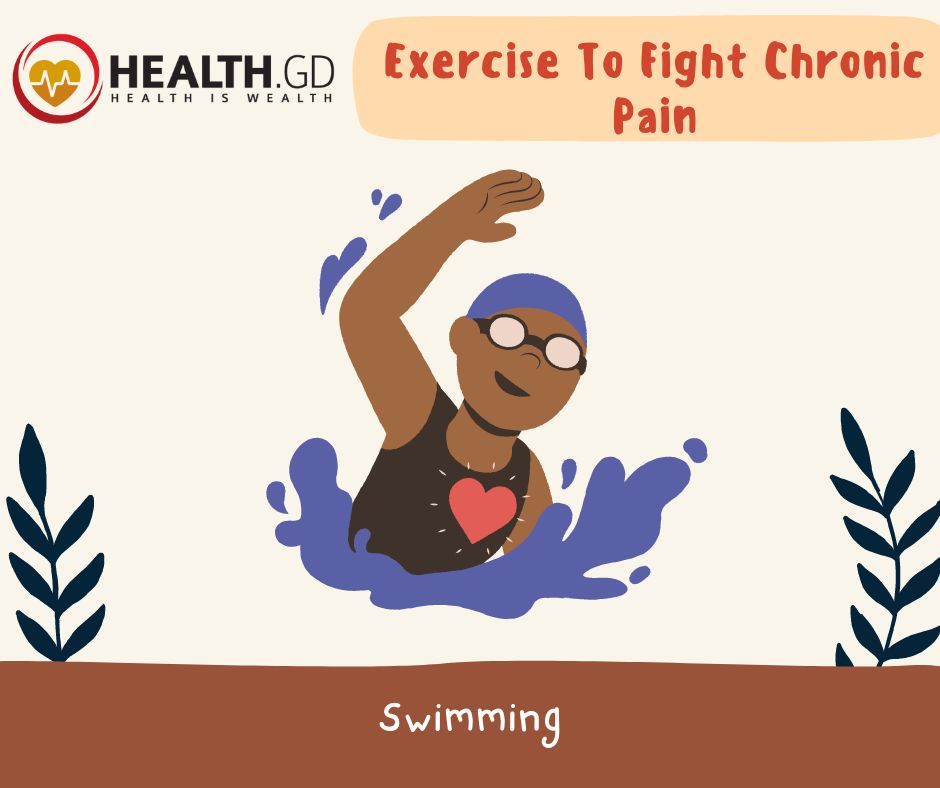
Swimming is the ideal fitness form for many chronic pain patients because it eliminates impact. You aren’t putting any pressure on your joints as you glide through the water. This sport can be ideal year-round if you can locate a facility with an indoor pool. Check with your local YMCA or parks and recreation department for the best deals.
2. Biking

Biking is another exercise option that reduces impact. However, you may wish to invest in a recumbent-style bicycle if you have back problems. Otherwise, leaning over the bars might aggravate lower back issues.
Ensure you wear a properly fitted helmet when riding outdoors. It only takes a second for a car to stray into the bike lane and brain damage can upset your life more than your other conditions.
3. Water Aerobics

Does the idea of a land-based Jane Fonda workout make your arthritic knees ache? If so, why not take your workout in the water? The liquid supports up to 90% of your body weight, taking pressure off your joints. You can use styrofoam weights to increase resistance.
4. Fitness Machines
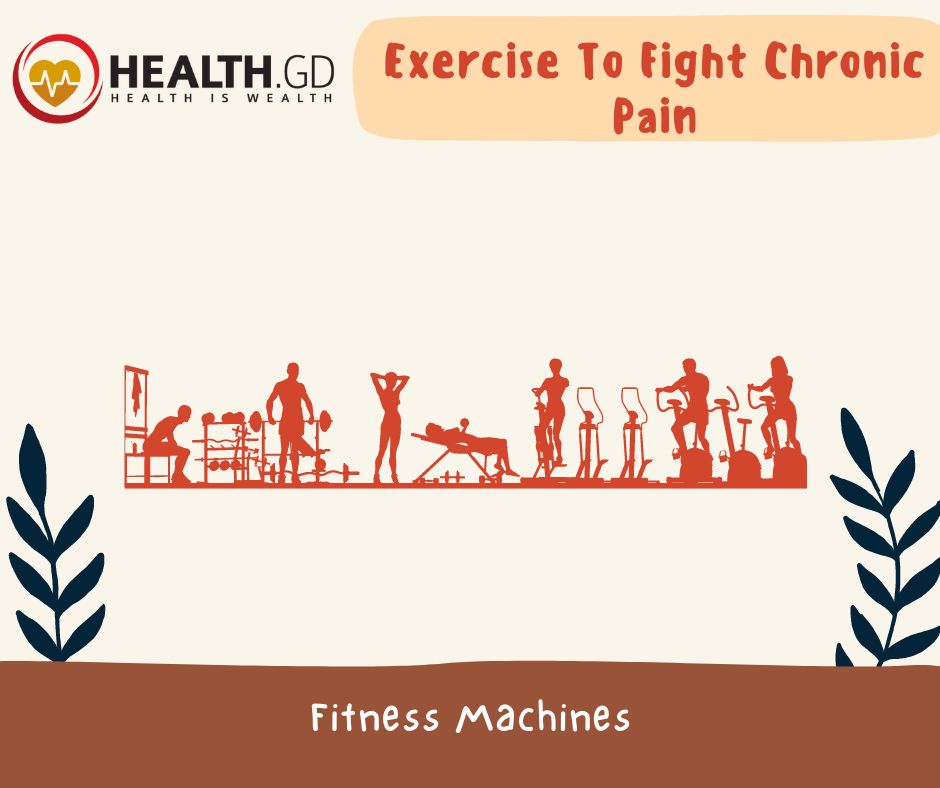
Fitness machines like elliptical trainers are great for chronic pain patients needing cardio. They take the impact off your knees while imitating running mechanics.
You can also use weights to get in strength. Experts recommend resistance training between one or two days a week to build and maintain muscle mass.
5. Walking
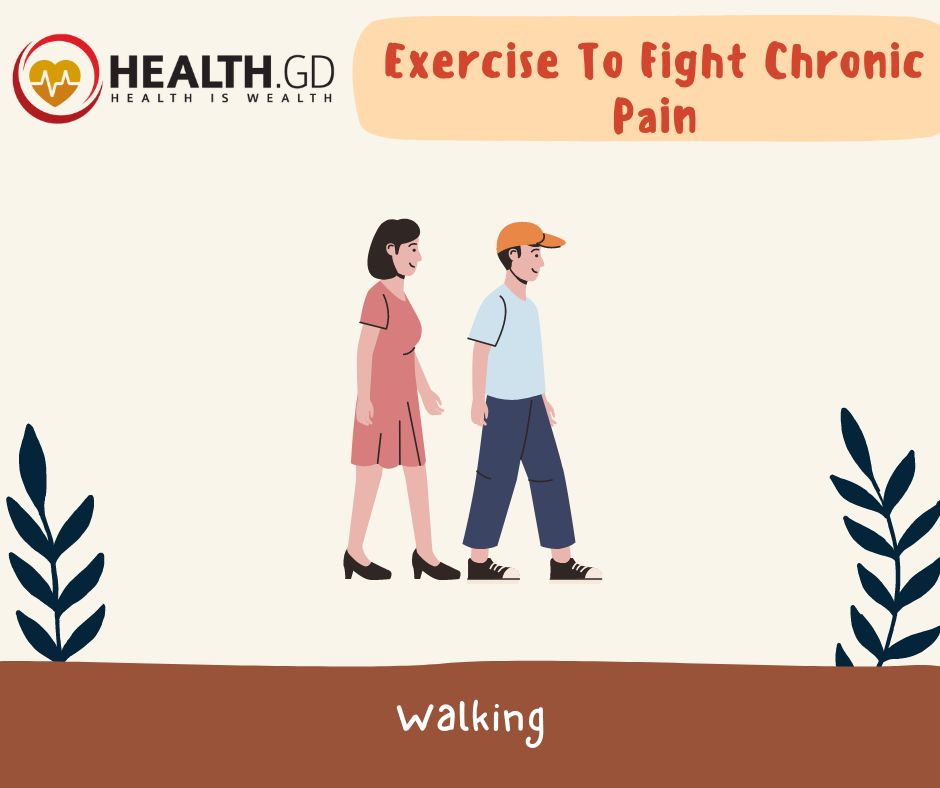
Walking is the ideal form of exercise for many because it’s free — all you need is a pair of supportive shoes. Pay attention to your footwear, as worn kicks can increase pressure on your joints. You should get a new pair of tennis shoes every 300 to 500 miles.
6. Yoga
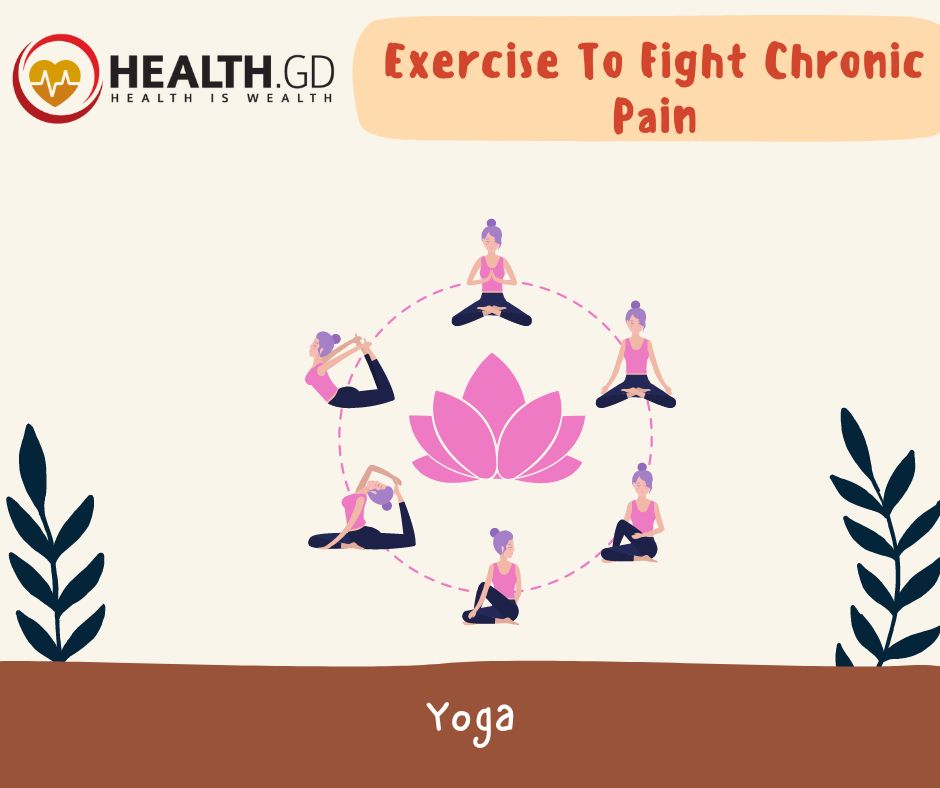
Yoga is a godsend for many chronic pain patients. The combination of flexibility training with strength and cardio elements eases pressure on joints and helps you move more freely.
However, the style you choose matters. If you walk into an Ashtanga class, you might feel dismayed — all those jump-backs can put pressure on your joints. Hatha is the best place for many to begin, although you may also enjoy gentle yin or restorative yoga for rest or sick days.
Exercise for Body Pain Relief and Reducing Chronic Pain
Are you avoiding exercise for body pain relief because you fear it will make matters worse? Now you understand why it benefits you to get moving. Try one of these best exercises for reducing chronic pain — you’ll increase your energy, functionality and overall quality of life.








